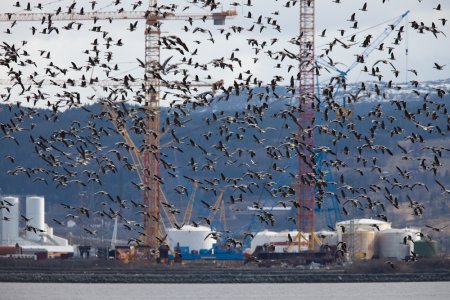Norway extends Trondheimfiord Ramsar Site

The Ramsar Site Trondheimfiord Wetland System, first designated in 2002, has been significantly extended in 2014 by the government of Norway to include nine wetland areas covering a further 1,079 ha.
As summarized by Ramsar’s Laura Máiz-Tomé, based on the information provided in the Ramsar Information Sheet, the 13 sub-sites which currently form this wetland of international importance consist of sheltered intertidal mudflats, salt marshes, permanent shallow marine waters and rocky shores. There are also two river estuaries which play an important role in flood regulation. Both river Gaula and river Verdalselva transport a large amount of sediments which are deposited in the estuaries contributing to a high biological productivity.
These wetlands support outstanding biodiversity and they are of great importance for migratory birds, in particular geese, ducks, waders and wintering seabirds. Nearly the entire Svalbard population of pink-footed goose (Anser brachyrhynchus) uses the sites as a staging area both in spring and autumn. Ørin, Gaulosen, Vinnan and Velvangen are important spawning grounds for the local fjord population of herring (Clupea herengius). Salmon (Salmo salar) and sea trout (Salmo trutta) also use some of the sites as migratory paths.
Trondheimfiord (including all 13 sub-sites) is one of the 10 areas in the national monitoring programme for wintering seabirds and waterfowl. The main human activities include recreation, fishing and bird watching.